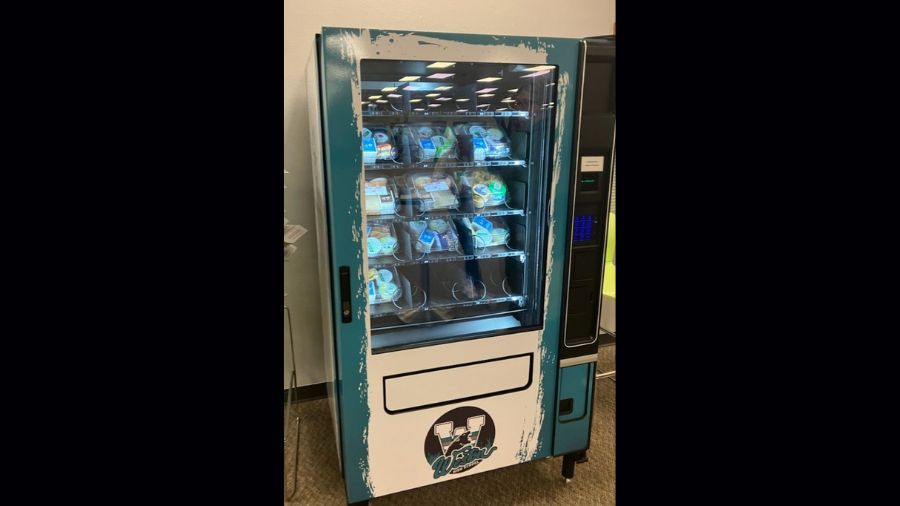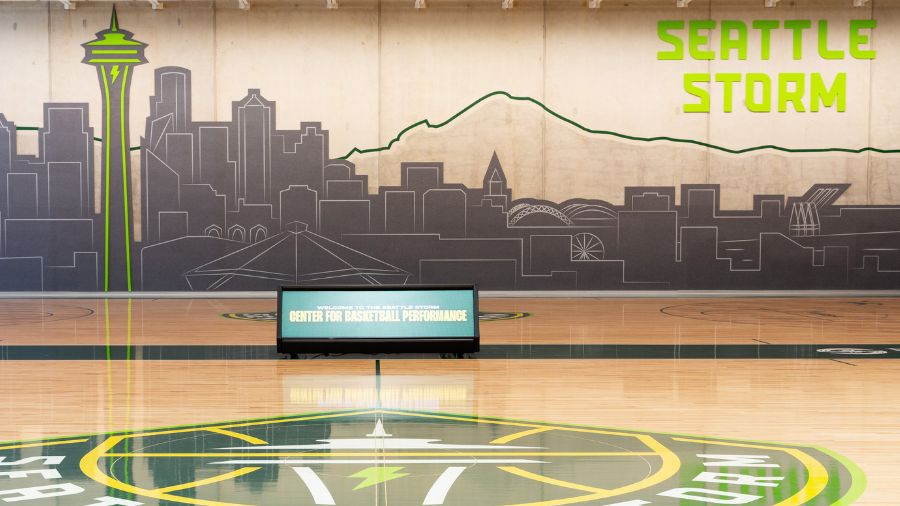Flying Fortress: A forgotten prototype crash that almost ended Boeing
Oct 31, 2018, 8:57 AM | Updated: 10:26 am
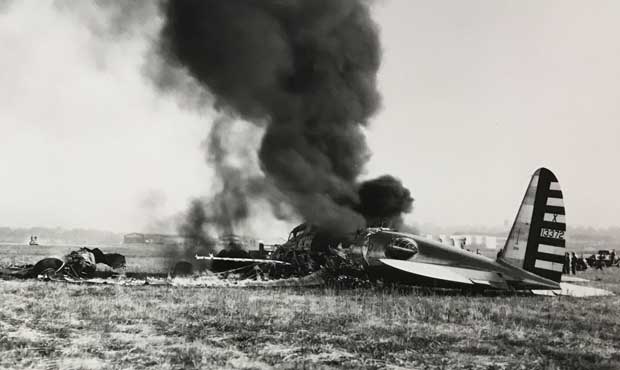
The B-17 prototype crashed in Dayton, Ohio. (Courtesy of the Boeing Company Archives)
(Courtesy of the Boeing Company Archives)
It’s one of the most iconic bombers from World War II, and it was a key part of Allied strategy to fight the Nazis and liberate Europe. Before that, though, what eventually became the B-17 suffered a tragic setback 83 years ago this week that not many people remember.
Boeing’s roots as a local company go back to 1916. The story of the B-17 begins in 1934 when the Roosevelt administration and the Air Mail Act forced big companies, including Boeing, that were building aircraft and flying passengers and cargo to split into separate entities.
This was because of charges of collusion between the aviation industry and previous Hoover administration Postmaster General Walter Brown. The charges were ultimately disproved years later, but Boeing was forced to split into three companies, including United Technologies, United Airlines, and the Boeing Airplane Company.
In September 1934, company founder Bill Boeing resigned as board chairman and stepped away from the industry completely. Longtime executive Claire Egtvedt became president and decided to go big; that is, to focus on building big airplanes.
Around the same time, the US Army Air Corps, precursor to the US Air Force, asked airplane manufacturers to build prototypes for a multi-engine coastal defense plane. One catch: there was no money from the government to build it.
Under Egtvedt’s leadership, Boeing essentially “bet the company” and spent all available cash to design and build what they called the Model 299. It was a big, shiny, aluminum, four-engine bomber designed to be equipped with an array of defensive machine guns.
The new plane debuted at Boeing Field and took its inaugural flight early on the morning of Sunday, July 28, 1935.
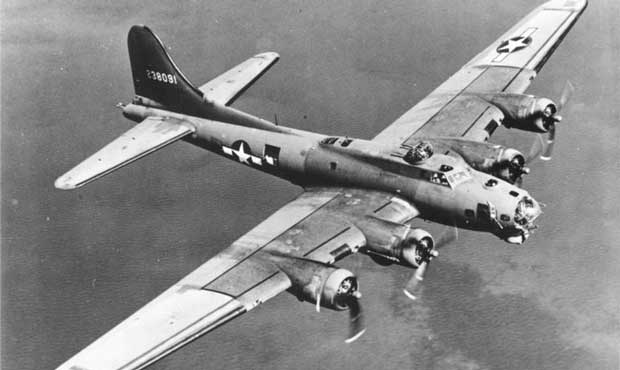
The new bomber was a big hit with the public and the reporters who came to see its rollout. Compared with other planes in production in 1935, the Model 299 was huge: 75 feet long, with a 100-foot wing span. The first flight lasted 90 minutes, and thousands of people around Western Washington caught a glimpse of the 299 and/or heard the distinctive sounds of its four engines.
Mike Lombardi is Boeing’s corporate historian, overseeing the company’s collection of historic photos, documents and artifacts from an office at the Boeing Archives.
Lombardi says the Model 299 came to be known by its more famous nickname with help from one of those local journalists who came to the rollout.
“It had four different machine gun positions to defend it, and they proposed that it could go out into the ocean and find enemy ships and it would protect America from invasion,” Lombardi said. “And with that talk … one of the great statements from one of our newspaper newsmen here in Seattle, Richard Smith with The Seattle Times . . . he exclaimed at seeing this airplane that it was a ‘Flying Fortress.’”
“And of course, that name stuck,” Lombardi said. “Boeing quickly adopted it, trademarked it and then pretty soon Dick Smith was working here at Boeing in the PR department … just a happy coincidence,” Lombardi said, with a chuckle.
The Model 299 made additional test flights around Seattle throughout August.
“Some of us remember years ago with the 747 doing the same thing, how everybody would go out and stop and look” when it flew over, Lombardi said. “The 299 made that same impression on everybody … just this incredible airplane, this symbol of technology and aviation advancement,” he said.
“Everyone in Seattle was justifiably very proud that Boeing was a Seattle company and doing these incredible things,” Lombardi said.
On Tuesday, August 20, 1935, the 299 took off and headed east to Wright Field in Dayton, Ohio for official trials, and to compete for an Army Air Corps contract against twin-engine bombers from Douglas and Martin.
Mike Lombardi says it was a record-breaking flight of just over nine hours from Seattle to Dayton.
“This airplane is so fast, it actually is faster than a fighter plane,” Lombardi said. “Boeing at this time is building the P-26 which was America’s first all-metal, low-wing monoplane, which was very fast at 233 miles an hour. But the 299 was even faster.”
Tests of the three bombers continued throughout September and October.
A Flying Fortress crashes
Then, on the morning of October 30, 1935, a crew of five got aboard the Model 299 for another test flight. They pointed the plane down the runway, accelerated, and headed up into the sky. But, they forgot to release a new safety device called a “gust lock,” which prevented flaps from being damaged by wind while the plane was parked.
“As the plane was climbing without any control, it stalled … it crashed and burned,” Lombardi said. “The airplane was gone, and, sadly, Boeing lost this wonderful test pilot Les Tower, along with the Air Corps pilot, so this was an incredible tragedy.”
The loss of life was tragic, of course, but the loss of the only Model 299 also meant that Boeing was doomed.
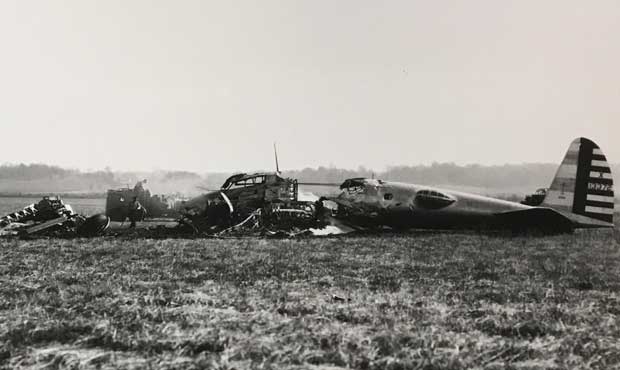
“Everything the company had went into this prototype and there it was, a burning wreck on the field. By default, Boeing lost the competition. We didn’t have an airplane to finish and Douglas won. So that was the end of the Boeing Company.”
The Army Air Corps placed a big order for the Douglas bomber, which became known as the B-18 Bolo.
Mike Lombardi says that things were pretty bleak around the Boeing factory in November and December of 1935 as it looked like it would all have to be shut down.
But, as we all know, it wasn’t really over for the scrappy little aerospace giant. And come January 17, 1936, things were looking up.
“One thing saved it, and that was that taking that risk on being innovative taking that risk to go a little bit farther than what the customer asked for and give them a better airplane,” Lombardi said.
“This airplane flew faster, higher could carry more could go farther than the Douglas airplane; clearly a better airplane all the way around it was the clear winner if it had made it through the competition. And so the Air Corps decided they had to have that Boeing airplane,” he said.
The Army ordered 13 Flying Fortress plane to start, and the relatively small contract literally saved the company. Then, as the World War II neared, the B-17 ultimately beat out the Douglas plane and became one of the workhorses of the strategic bombing of industrial sites in Germany. Ultimately, more than 12,000 Flying Fortress planes were built by Boeing and other manufacturers during the war.
Mike Lombardi says it isn’t just the Flying Fortress that’s worthy of icon status. Also deserving are the young men who flew them, and the Boeing employees who built them.
“To think that airplanes could win wars was a pretty radical idea,” Lombardi said of the American air power strategy embodied by the Flying Fortress. “But this is what America did in World War II [with] these young men flying these B-17s.”
“The other part of that was here on the home front, that people could build that many airplanes in that short a time,” Lombardi said. “That was also part of the legendary history of the B-17, and that history was here in Seattle.”






